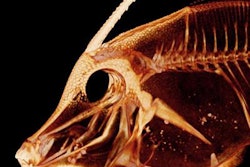Wednesday, November 30 | 10:30 a.m.-10:40 a.m. | SSK15-01 | Room N229
Dutch researchers have successfully segmented gray and white matter in the brain using 4D CT. The technique provides a subtle assessment of the health of the brain for stroke treatment, and it could be useful in further segmentation and anatomic labeling, according to the group.White and gray matter respond differently to ischemia and thrombolytic treatment, the researchers noted in their abstract. Being able to differentiate the tissue types in CT enables tissue-dependent perfusion analysis and automated detection of stroke-related pathology. The study shows the feasibility of segmenting white and gray matter in 4D CT images of acute ischemic stroke patients.
"Those 4D CT images are increasingly being made in clinical practice in case of suspicion of stroke to get insight into the health status of the soft tissue in the brain," wrote Rashindra Manniesing, PhD, from Radboud University Medical Center, in an email to AuntMinnie.com.
For example, if a large amount of soft tissue is damaged because a feeding artery is blocked, then this has consequences for treatment selection, he noted. Normally, an assessment of the soft tissue is performed on MR because of its superior soft-tissue contrast, but modern CT scanners achieve high-quality images at a low clinical dose.
"In the case of 4D images, the added time information contains valuable information to discriminate white-matter tissue from gray matter," he said.
Segmentation also facilitates the further segmentation and anatomic labeling of the subcortical structures of the brain. A robust way to do this would be of great interest for stroke trials in ways that will be explained in the presentation.


















